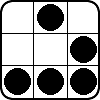But those 6frustum culling passes per light should be very fast bebecause they should only operate for subset of data. Assuming that you do range check before.
Ah, correct.
I did another test with the release version and I got an average of 0.1ms :s! I don't know why it's so low now (I guess I had a game running in the background or some debugging file idk). Still a bit high though. I'm gonna take some time to look into what I am doing wrong.
Quicky algorithm that I would try.
1. Frustum cull visible lights.
2. Sort lights by radius.
3. Frustum cull objects but add biggest radius of visible lights for every object.
4. For each visible light loop over object list from pass 3 and do range check. For each face frustum cull objects that are inside the range.
Hmm, that seems like a good idea. I will try that actually. I may have to do two frustum culls though. One with the radius and one without. So that way objects outside of players view don't get rendered. I may also need to make some dynamic lights smaller for this to be more efficient.






